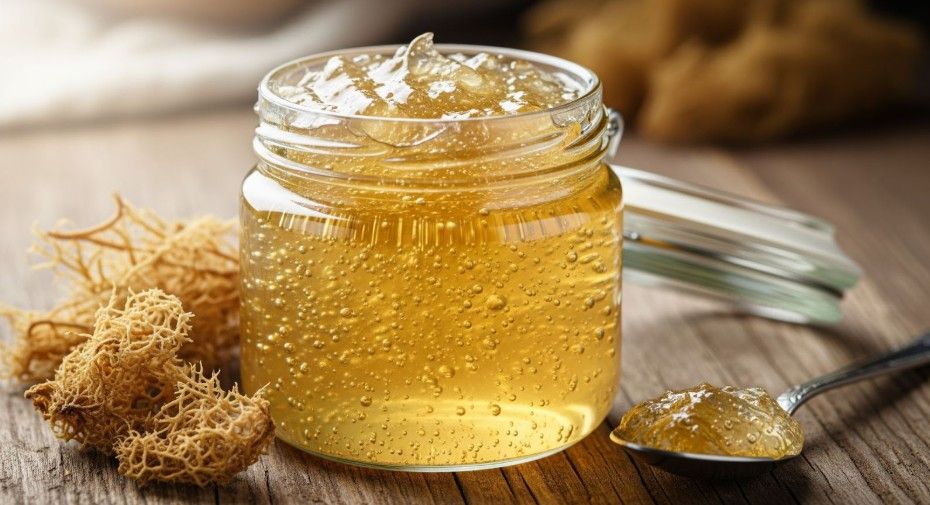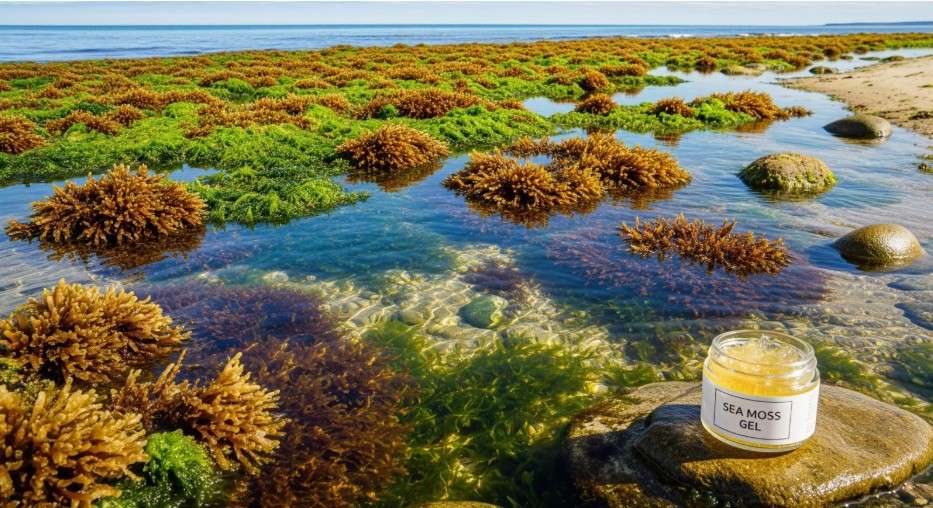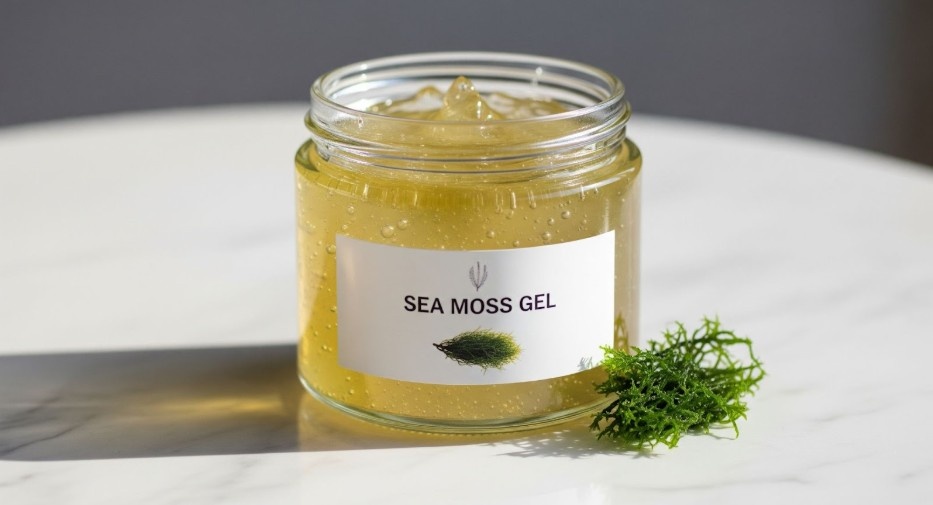
Sea moss gel is everywhere—from smoothie bars to TikTok testimonials. So, is sea moss gel good for you? Short answer: it can be, for specific reasons, but there are real caveats you should know before making it a daily habit. Let’s keep this practical and evidence-based.
What is sea moss gel, exactly?
“Sea moss” typically refers to red seaweeds like Chondrus crispus (Irish moss) or Gracilaria. The gel is usually made by soaking and blending the dried seaweed with water to create a thick, neutral-tasting paste you can add to drinks or recipes. Seaweeds are naturally rich in soluble fiber and contain minerals, including iodine, but the actual nutrient levels vary by species, harvest location, and processing.
Is sea moss gel good for you? Benefits (and what the evidence says)
Seaweed’s soluble fiber can support gut health and help with satiety and cholesterol management. Those benefits are established for dietary fibers broadly; seaweed fibers (like carrageenan and related polysaccharides) are part of that picture, though high-quality human trials on sea moss gel itself are limited. Reviews highlight bioactive compounds and potential prebiotic effects, but call for more human research. In other words: promising, not proven.
Seaweed is also a source of iodine, an essential mineral your thyroid needs to make hormones. Getting enough iodine is important; in the U.S., adults need about 150 mcg/day (220–290 mcg in pregnancy and lactation). Seaweed can help you meet those needs—sometimes a little too well (more on safety below).
Antioxidants in red seaweeds (including Chondrus crispus) are being studied for anti-inflammatory and antimicrobial effects, but most findings are from lab or animal models, not definitive human trials. Translation: don’t expect sea moss gel to be a cure-all; think of it as a fiber-rich, iodine-containing food supplement with early-stage evidence for additional perks.

What are the real risks and downsides?
Excess iodine. Seaweed iodine levels vary widely; some species (like kombu) can easily push you above the U.S. tolerable upper intake level of 1,100 mcg/day. Chronically exceeding this can disrupt thyroid function—even if you don’t have a thyroid condition. Experts caution against high-dose kelp/seaweed supplements for that reason. Nutrition labels often don’t list iodine, so it’s easy to overshoot without realizing it.
Heavy metals. Seaweeds can accumulate arsenic, cadmium, and lead from seawater. While most products are safe, monitoring studies show variable levels, and certain seaweeds (notably hijiki) have raised inorganic arsenic concerns. Choose reputable brands that test for contaminants and avoid varieties known to run high.
Carrageenan controversy. Sea moss naturally contains carrageenan-type fibers. Food-grade carrageenan is considered GRAS (Generally Recognized as Safe) in the U.S., yet some researchers debate its gastrointestinal effects. Human evidence is limited; if you notice gut sensitivity, you may want to avoid it.
How should you use sea moss gel safely?
There’s no official U.S. “dosage” for sea moss gel. Practically, many people use 1–2 tablespoons in smoothies or recipes. From a safety standpoint, the smarter target is iodine-aware use: keep your total daily iodine intake under the U.S. UL of 1,100 mcg (and within the recommended range for your life stage), especially if you also eat sushi/seaweed snacks or use iodized salt. If you’re pregnant, breastfeeding, have a thyroid condition, or take thyroid medication, talk with your clinician first.
When buying, look for brands that share third-party testing (for heavy metals and iodine) and specify species. Remember, iodine content often isn’t on the Nutrition Facts panel, so brand transparency matters.
Quick reality check (pros vs. cautions)
| What you might be seeking | What the evidence and experts say |
| Fiber for gut health, a mineral boost | Reasonable, but data specific to sea moss gel is limited; benefits largely extrapolated from seaweed fibers and general nutrition science. |
| Thyroid support via iodine | Possible, but easy to overshoot; monitor total iodine and avoid high-iodine seaweeds or large daily doses. |
| “Superfood” claims (immunity, skin, anti-aging) | Early lab evidence only; human trials are sparse—treat as a supplement, not a miracle. |
FAQs: People Also Ask
1. Does sea moss gel help with weight loss?
Sea moss gel is low-calorie and provides soluble fiber, which can help you feel fuller and support a balanced diet. But there’s no robust human research showing sea moss gel specifically causes weight loss. Use it as part of an overall nutrition plan, not as a standalone fix.
2. Is sea moss gel safe if I have a thyroid condition?
Caution is warranted. Because seaweed iodine varies, regular use could push your iodine intake too high or too low for your needs. People with thyroid disorders—or those on thyroid medication—should speak with a healthcare professional before using it routinely.
3. How much sea moss gel is okay per day?
There isn’t an official recommended amount. Practically, 1–2 tablespoons is common in recipes, but what matters is your total iodine from all sources. Aim to stay within U.S. guidelines (150 mcg/day for most adults; UL 1,100 mcg/day) and choose brands that publish testing results.
4. Can sea moss gel contain heavy metals?
It can. Seaweeds can concentrate elements like arsenic from seawater. Most reputable products are safe, but quality varies. Pick brands with third-party testing and avoid high-risk varieties (e.g., hijiki).
Bottom line: So, is sea moss gel good for you?
In moderation—and from a brand that publishes third-party testing—sea moss gel can be a reasonable way to add soluble fiber and iodine, but it’s not a cure-all. Keep portions modest, watch your total iodine, and loop in your clinician if you have thyroid concerns.
And if you’re wondering how long does it take for sea moss to start working in your body, fiber-related effects like fullness or regularity may show up within a few days to a couple of weeks, while mineral status shifts (like iodine) generally take longer and should be monitored. Used thoughtfully, that’s how you make “is sea moss gel good for you” lean toward yes for your specific goals.



